Search Results for: Greenpeace
Eco Imperialists WWF, Greenpeace – Disappointing Outcome at Pacific Fisheries Meet
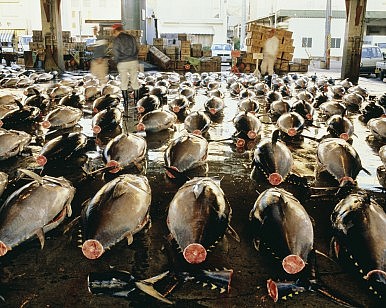 Delegates from Pacific Island nations had planned to form a united force at the Samoa meeting, calling on the body that manages the fishery to urgently adopt a number of conservation measures at its annual meeting. Greenpeace is reporting than none of the measures were adopted. Journalists were not permitted to attend the final session of the meeting. Read the rest here 11:42
Delegates from Pacific Island nations had planned to form a united force at the Samoa meeting, calling on the body that manages the fishery to urgently adopt a number of conservation measures at its annual meeting. Greenpeace is reporting than none of the measures were adopted. Journalists were not permitted to attend the final session of the meeting. Read the rest here 11:42
Greenpeace – Just 97 of the ‘world’s cutest’ sea mammals remain – Are these people for real?!?!
One of the world’s “cutest” sea mammals is at risk of extinction unless a ruling is passed to protect the vaquita porpoise.  Mexico has one last chance to save the creature – a small, shy porpoise, described by one scientist as looking like “they’re wearing lipstick and mascara”. It is only found in a 4,000sq km region of the Gulf of Mexico Read the rest here 20:25
Mexico has one last chance to save the creature – a small, shy porpoise, described by one scientist as looking like “they’re wearing lipstick and mascara”. It is only found in a 4,000sq km region of the Gulf of Mexico Read the rest here 20:25
Greenpeace vows to destroy planet – “But our supposedly precious home planet and its wildlife couldn’t give a shit.”
 Following a brutal giant squid attack on a Greenpeace submarine, senior activists realised that Earth is a hostile place populated by creatures that exist only to kill. A spokesman said: “For years we have endangered our lives haranguing whaling ships, risked imprisonment to help obscure mammals and worn dreadful sexless knitwear so that we look the part while doing so. “But our supposedly precious home planet and its wildlife couldn’t give a shit.” Read the rest here 13:20
Following a brutal giant squid attack on a Greenpeace submarine, senior activists realised that Earth is a hostile place populated by creatures that exist only to kill. A spokesman said: “For years we have endangered our lives haranguing whaling ships, risked imprisonment to help obscure mammals and worn dreadful sexless knitwear so that we look the part while doing so. “But our supposedly precious home planet and its wildlife couldn’t give a shit.” Read the rest here 13:20
Murkowski Urges Mickey D CEO to Reject Greenpeace Campaign Against Pollock! Is he nuts??
 Senator Lisa Murkowski today reached out to the President and CEO of McDonald’s, urging him to ignore an anti-fishing campaign from Greenpeace that is attempting to shut down one of the most sustainably managed fisheries in the world. Murkowski cites McDonald’s own website and promotional materials touting the company’s support for Alaska Pollock sourced from a “wild-caught and sustainable fishery.” Read more here 17:36
Senator Lisa Murkowski today reached out to the President and CEO of McDonald’s, urging him to ignore an anti-fishing campaign from Greenpeace that is attempting to shut down one of the most sustainably managed fisheries in the world. Murkowski cites McDonald’s own website and promotional materials touting the company’s support for Alaska Pollock sourced from a “wild-caught and sustainable fishery.” Read more here 17:36
Leona Aglukkaq targets Greenpeace in ICC speech, warns of alignment with the enviros.
 Leona Aglukkaq, Nunavut’s MP and Canada’s Minister of Environment, had strong words against Greenpeace in her keynote address at the Inuit Circumpolar Council’s general assembly in Inuvik, N.W.T. “Inuit were victims of misinformation and lies spread by a group that had no regard for their impact on our way of life,” she said of Greenpeace’s campaign against the seal hunt. Read more here 08:33
Leona Aglukkaq, Nunavut’s MP and Canada’s Minister of Environment, had strong words against Greenpeace in her keynote address at the Inuit Circumpolar Council’s general assembly in Inuvik, N.W.T. “Inuit were victims of misinformation and lies spread by a group that had no regard for their impact on our way of life,” she said of Greenpeace’s campaign against the seal hunt. Read more here 08:33
Greenpeace Loses Millions, Blames Rogue Employee, Currency Hedge Gone Wrong
 Greenpeace has suffered a 3.8 million-euro ($5.2 million) loss on an ill-timed bet in the currency market by a well-intentioned — if reckless — employee in its financial unit. The employee was fired for ignoring rules, not for the loss itself, which — although sizeable compared with donor contributions — amounts to a fraction of the organization’s annual revenues of around 300 million euros. Read more here 12:50
Greenpeace has suffered a 3.8 million-euro ($5.2 million) loss on an ill-timed bet in the currency market by a well-intentioned — if reckless — employee in its financial unit. The employee was fired for ignoring rules, not for the loss itself, which — although sizeable compared with donor contributions — amounts to a fraction of the organization’s annual revenues of around 300 million euros. Read more here 12:50
I’m no Greenpeace fan, but, enough is enough. This is disgusting.
 Monster fishing ship in Pacific, east of Australia – The world’s largest fishing vessel, the factory freezer ship Lafayette, has turned up in the Pacific Ocean east of Australia. Satellite-tracking systems registered the location of the controversial 49,000 tonne Lafayette and six attendant trawlers north-east of Norfolk Island on Friday, Greenpeace said. The Russian-flagged, Chinese-owned vessel is five times the size of the Dutch factory trawler Margiris, which was banned from Australian waters in 2012. Read [email protected] 14:20
Monster fishing ship in Pacific, east of Australia – The world’s largest fishing vessel, the factory freezer ship Lafayette, has turned up in the Pacific Ocean east of Australia. Satellite-tracking systems registered the location of the controversial 49,000 tonne Lafayette and six attendant trawlers north-east of Norfolk Island on Friday, Greenpeace said. The Russian-flagged, Chinese-owned vessel is five times the size of the Dutch factory trawler Margiris, which was banned from Australian waters in 2012. Read [email protected] 14:20
Independent Greenpeace? Never Mind
 Greenpeace makes a big deal about how it’s independent. It tells us again and again and again that it accepts no government or corporate money. We don’t solicit or accept funding from governments, corporations or political parties, or donations which could compromise our independence, aims, objectives or integrity. The implication is clear: Greenpeace is “pure.” Government and corporate funding is bad. Taking such money renders one morally suspect. [email protected] Check out the NGO links!
Greenpeace makes a big deal about how it’s independent. It tells us again and again and again that it accepts no government or corporate money. We don’t solicit or accept funding from governments, corporations or political parties, or donations which could compromise our independence, aims, objectives or integrity. The implication is clear: Greenpeace is “pure.” Government and corporate funding is bad. Taking such money renders one morally suspect. [email protected] Check out the NGO links!
Greenpeace International: The behavior of the longline tuna fisheries industry is scandalous
![]() Amsterdam, 20 November 2013 – A grave lack of regulations hinders sustainable management of the world’s oversized longline tuna fishery fleets, Greenpeace International warned as it released a new report today. more@fishupdate 08:29
Amsterdam, 20 November 2013 – A grave lack of regulations hinders sustainable management of the world’s oversized longline tuna fishery fleets, Greenpeace International warned as it released a new report today. more@fishupdate 08:29
Greenpeace: ‘Our protest in the Arctic wasn’t piracy’ – I think the Russians disagree!
 From the article: But, what would you say to people that accuse the Greenpeace activists of trespass? Do you think that is something that should be allowed? Well, we haven’t been charged with trespass, we have been charged with piracy. Quite clearly we are not pirates. Piracy has to be committed against a ship. This is an oil platform, not a ship. And it also has to be done with a threat of violence. [email protected] 16:06
From the article: But, what would you say to people that accuse the Greenpeace activists of trespass? Do you think that is something that should be allowed? Well, we haven’t been charged with trespass, we have been charged with piracy. Quite clearly we are not pirates. Piracy has to be committed against a ship. This is an oil platform, not a ship. And it also has to be done with a threat of violence. [email protected] 16:06
Canadian firm hopes to save salmon by spiking ocean with fertilizer, but even Greenpeace condemns ‘rogue science’
 Two men stand in a small art gallery in Squamish, B.C., and make their case for a plan to create more fish simply by spiking the ocean with fertilizer. “Are there more fish in the sea today than there were 100 years ago, yes or no?” says one of the men, Jason McNamee, repeating a well-rehearsed patter. After a beat, he follows up with, “What have you done about it?” more@nationalpost
Two men stand in a small art gallery in Squamish, B.C., and make their case for a plan to create more fish simply by spiking the ocean with fertilizer. “Are there more fish in the sea today than there were 100 years ago, yes or no?” says one of the men, Jason McNamee, repeating a well-rehearsed patter. After a beat, he follows up with, “What have you done about it?” more@nationalpost
Greenpeace has accused the 24 nations responsible for managing the world’s biggest tuna fishery of failing to ensure the industry fishes legally.
 China, Japan, South Korea, Taiwan, the United States, Europe and the Philippines are all big players in the Pacific tuna fishery. The countries have just finished five days of negotiations at the Western and Central Pacific Fisheries Commission in Pohnpei, in the Federated States of Micronesia. Audio: Data failures threaten Pacific tuna conservation: Greenpeace (ABC News) [email protected] 12:22
China, Japan, South Korea, Taiwan, the United States, Europe and the Philippines are all big players in the Pacific tuna fishery. The countries have just finished five days of negotiations at the Western and Central Pacific Fisheries Commission in Pohnpei, in the Federated States of Micronesia. Audio: Data failures threaten Pacific tuna conservation: Greenpeace (ABC News) [email protected] 12:22
The World’s Biggest Fishers Agree To Catch Less Tuna – Greenpeace immediately denounced the reduction
 Asia-Pacific fishing nations and territories agreed on Thursday to cut catches of young bluefin tuna by 15 percent, with an agreement environmentalists said would not stop overfishing. Nine economies, including the United States, China, South Korea and Taiwan, concluded a four-day meeting of the Western and Central Pacific Fisheries Commission (WCPFC) in Fukuoka, western Japan. more@businessleader 07:24
Asia-Pacific fishing nations and territories agreed on Thursday to cut catches of young bluefin tuna by 15 percent, with an agreement environmentalists said would not stop overfishing. Nine economies, including the United States, China, South Korea and Taiwan, concluded a four-day meeting of the Western and Central Pacific Fisheries Commission (WCPFC) in Fukuoka, western Japan. more@businessleader 07:24
The Enviro Best Goes On! Pew Charitable Trusts,World Wide Fund,Greenpeace – Japanese greed for tuna decimating species

Time is running out to save some species of tuna from overfishing, environmental groups warned, calling on the world’s biggest consumer Japan to take the lead in reducing the catch. Industrial-scale fishing that takes large amounts more@the standard 08:04
Greenpeace Report provides route to transforming Pacific tuna fisheries
 A new report, launched today, Monday, by Greenpeace Australia Pacific, aims to provide a blueprint on how Pacific Island governments and regional bodies can promote a more sustainable and locally owned and operated tuna fishery in the region. @fishupdate.com
A new report, launched today, Monday, by Greenpeace Australia Pacific, aims to provide a blueprint on how Pacific Island governments and regional bodies can promote a more sustainable and locally owned and operated tuna fishery in the region. @fishupdate.com
Appeals Court Upholds Steller Sea Lion Decision – Environmental groups Oceana and Greenpeace intervened on behalf of the NMFS.
The 9th U.S. Circuit Court of Appeals on Tuesday issed its ruling in the challenge brought by the state of Alaska and commercial fishing interests. The decision upholds a lower court ruling. The National Marine Fisheries Service in 2011 curtailed fishing after determining the western population of Steller sea lions is nutritionally stressed because they aren’t getting enough to eat. continued@courthousenews
Greenpeace ranks Clover Leaf Seafoods worst in 2013 tuna ranking
“Clover Leaf has become synonymous with ocean destruction in a can,” said Sarah King, Greenpeace Canada’s oceans campaign coordinator. “Until Canada’s biggest brand sources its tuna responsibly,
Greenpeace is urging consumers to choose brands working to be ocean-friendly.” continued
The NFI claims that Greenpeace is a “science-averse” organisation that only cares about fundraising. (They ain’t the only ones!)
Fish Info & Services Co.Ltd –  The National Fisheries Institute (NFI) is accusing Greenpeace of lying about US retailers’ seafood sustainability practices, and thus challenging reporters to interview Greenpeace before “regurgitating” the information in its press releases. continued
The National Fisheries Institute (NFI) is accusing Greenpeace of lying about US retailers’ seafood sustainability practices, and thus challenging reporters to interview Greenpeace before “regurgitating” the information in its press releases. continued
Greenpeace seeks to protect Alaska underwater canyons-Commercial fishermen are watching closely.
Bay Area conservationists are back from a dramatic deep sea expedition to research and protect huge underwater canyons in Alaska. The area is the heart of the state’s $1 billion-a-year fishing industry and the canyons may be a vital link in the lifecycle of fish that you eat. http://abclocal.go.com/kgo/story?section=news/assignment_7&id=8894604
The Pew Dog and Greenpeace’s anti-Sealord spoof.
My friend, jj the fisherman, is very creative, and a pretty smart SOB. He creates legitimate satire. You will find plenty more at his column. Click show more to find it all. Lots of photo and great articles. http://jjthefisherman.newsvine.com/
It appears that Greenpiece finds it a legitimate method of communicating their anti fishing view, of which ending fishing would probably find them destitute, as it is apparent they are on a path of unsustainability by over-exploiting fishermen!
The greedy ENGOs just don’t understand their greed to hunt the last fisherman to extinction will cause an unprecedented collapse of their bread and butter revenue raising target.
Rage erupts over Greenpeace’s anti-Sealord spoof
“Satire has long been used as a way of getting messages across. We’re not criticising the workers that feature in this ad. Those in the fishing industry here and in the Pacific deserve to have a future in the fishing industry, and they’re entitled to make a living from the sea, but Sealord itself is putting that at risk by its destructive catch methods,” he affirmed. Read More.
http://fis.com/fis/worldnews/worldnews.asp?l=e&ndb=1&id=55853

Green Groups Turn a Blind Eye to Mysterious Increase in Whale Deaths
Several environmentalist groups campaign against offshore oil and gas projects because of their ecological impacts, but those same groups appear to apply less scrutiny to the potential impacts of offshore wind developments. The Sierra Club, the League of Conservation Voters (LCV) and Greenpeace have all advocated for East Coast offshore wind projects amid the increase in whale deaths after slamming offshore oil and gas projects for their environmental impacts. The National Oceanic and Atmospheric Administration (NOAA) has declared “unusual mortality events” for humpback and North Atlantic right whales since 2016 and 2017, respectively, a timeline which generally coincides with the start of offshore wind development off of the East Coast in 2016, according to NOAA’s website. >>click to read<< 12:09
Fisheries plan ignores anti-bottom trawling protest
 Greenpeace oceans campaigner Ellie Hooper says the new plan does nothing meaningful to address destruction of the seabed. “We see this plan as a missed opportunity to protect the ocean from the ravages of bottom trawling and truly transform commercial fishing in Aotearoa.” The draft plan, released in April, was blasted as ‘all carrot no stick’. Not so, says the Government. Announcing the final plan, Minister for Oceans Rachel Brooking said it struck a balance between looking after the ocean and making sure New Zealand had a sustainable seafood sector that can cope with the impacts of climate change. For example, the transformation plan looks at ways the industry can earn more and create more jobs without catching more fish, by utilising the whole catch in nutraceuticals and other novel uses. It also suggests the creation, incentivisation and adoption of new technology means restrictions on bottom trawling aren’t needed. >click to read< 18:17
Greenpeace oceans campaigner Ellie Hooper says the new plan does nothing meaningful to address destruction of the seabed. “We see this plan as a missed opportunity to protect the ocean from the ravages of bottom trawling and truly transform commercial fishing in Aotearoa.” The draft plan, released in April, was blasted as ‘all carrot no stick’. Not so, says the Government. Announcing the final plan, Minister for Oceans Rachel Brooking said it struck a balance between looking after the ocean and making sure New Zealand had a sustainable seafood sector that can cope with the impacts of climate change. For example, the transformation plan looks at ways the industry can earn more and create more jobs without catching more fish, by utilising the whole catch in nutraceuticals and other novel uses. It also suggests the creation, incentivisation and adoption of new technology means restrictions on bottom trawling aren’t needed. >click to read< 18:17
Is the Great Fishkill of 1976 About to be Repeated? By Jim Lovgren
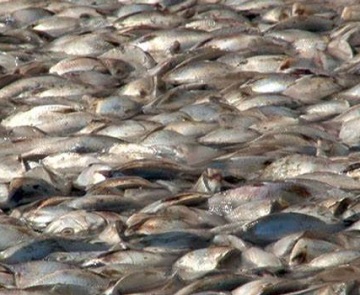 In 1976, our country suffered the worst man-made environmental catastrophe in its history up to that point in time. An estimated 2,500 square miles of ocean waters off the New York/ New Jersey coast experienced a Hypoxic event, [oxygen depletion], which began with a simple algae bloom offshore that drifted north into the sludge dump site 12 miles off Long Branch, N.J. When the bloom encountered the nutrient rich sewerage, it exploded in a feeding frenzy eventually expanding in size to cover from the south shore of Long Island down the Jersey coast as far as Atlantic city, and stretching 40 to 50 miles to the east. When the Algae started to die, [as it always does] it sank to the bottom and started to decompose, which results in oxygen depletion. Most of the fish in the area were able to swim away from the dead zone being created, but the bottom dwelling [benthic]species, clams, scallops, conch, starfish, crabs, and lobsters could not, and they died. The E.P.A. estimated kill ratios among bottom dwelling creatures in the dead zone at 40% to as high as 99.5 %.
In 1976, our country suffered the worst man-made environmental catastrophe in its history up to that point in time. An estimated 2,500 square miles of ocean waters off the New York/ New Jersey coast experienced a Hypoxic event, [oxygen depletion], which began with a simple algae bloom offshore that drifted north into the sludge dump site 12 miles off Long Branch, N.J. When the bloom encountered the nutrient rich sewerage, it exploded in a feeding frenzy eventually expanding in size to cover from the south shore of Long Island down the Jersey coast as far as Atlantic city, and stretching 40 to 50 miles to the east. When the Algae started to die, [as it always does] it sank to the bottom and started to decompose, which results in oxygen depletion. Most of the fish in the area were able to swim away from the dead zone being created, but the bottom dwelling [benthic]species, clams, scallops, conch, starfish, crabs, and lobsters could not, and they died. The E.P.A. estimated kill ratios among bottom dwelling creatures in the dead zone at 40% to as high as 99.5 %.
The Surf clam fishery off the Monmouth and Ocean County shore was devastated, and has been barely profitable since, except for use as bait. The nearshore scallop beds a few miles off Asbury Park, never came back. Lobsters reinhabited the mud hole over time, and the fall migration of finfish species occurred as usual. This Fishkill was a death blow for the New York and northern New Jersey sewer kings who did not want to clean up their act and insisted that the ocean can absorb it all. Commercial and recreational fishermen had been complaining about the water quality in the New York Bight for years by now, but nothing was ever done, as the government wanted to dispose of sewerage as cheaply as possible. After this unprecedented environmental disaster, they were forced to do something, as the general public was now up in arms, and environmental organizations were springing up with the express purpose of stopping Ocean sludge dumping. The American Littoral Society, created by Monmouth County resident Derry Bennet led the anti-sludge dumping movement, soon joined by the newly created Save our Shores. In 1983 Derry created Clean Ocean Action, and hired Cindy Zipf to run it. Eventually sludge dumping ended in 1989 by an act of Congress. This Fishkill also brought other barbaric dumping practices to the public’s attention, in particular Acid Dumping on the Cholera Banks, burning barges from the NY harbor, and contaminated dredge spoils. All of these fights were led by Clean Ocean Action, who successfully sued the NY/NJ Port Authority over contaminated dredge spoils dumping, which was loaded with P.C.B.s and Dioxin. Their lawsuit resulted in setting nation-wide standards for the amount of contaminants allowed in dredged material before it is not allowed to be dumped in an ocean dump site. The point of this is, citizens can unite and fight the bad guys, if they work together, and develop a strategy of attack. Unfortunately, it took an environmental disaster for the public to wake up and become involved.
That is where we are now, on the verge of a manmade, greed-driven, environmental catastrophe that will make the 1976 fish kill look like child’s play. This one involves animal extinctions. Many people are aware of the recent spate of marine mammal deaths along the east coast, but many do not, because the mainstream media is trying to ignore them. Of course, when it is covered, it’s a paid-off flunky, or integrity challenged scientist who states that the deaths have nothing to do with offshore wind. In 1976 sewerage sludge was the catalyst for a massive Fishkill that just happened to have the right environmental conditions to amplify its effects. The coming catastrophe will be caused by noise.
The constant, incessant, deafening crescendo of high-powered sonar, seismic, and piledriving, 24 hours a day, season after season, year after year is going to permanently alter the marine environment and increase global warming. Recent scientific studies have found that windfarms actually increase the atmospheric temperature in its vicinity by several degrees, while an unknown number of massive electrical substations will be situated on each lease site drawing sea water directly into its system to cool off the heat generated by electrical conversion. The cooling system of these substations is comparable to the ancient nuclear power plant cooling systems that destroyed wildlife along the east coast by impingement and heating of the estuarine waters that the system used. Each of these substations are going to increase the water temperature around them, perhaps substantially, but don’t worry, the ocean can absorb it. Just like the old days.
While the government flunkies and windmill developers all chant there is no proof the sonar or seismic is harming the marine mammals that are increasingly winding up dead on our beaches, they ignore the growing mountain of evidence that proves it does. The real question is what are acceptable levels of noise that will not cause harm to creatures that rely on hearing to survive. Funny thing, it seems that the alphabet environmental groups only care about seismic and sonar testing when it affects our countries national security or the oil industry. They all have been remarkably silent, as they watch their worst nightmare unfold before their eyes. Greenpeace made saving the whales their number one priority, yet today simply say, the Whales are not being killed by windmills. Here’s an interesting quote
from Surfrider Tasmania President, Ally King from 2022, “ It is absolutely ridiculous to be allowing international companies to blast our coastline, with no benefit for local communities, or regard to marine life. The onus should be on the proponent to prove no harm, and the precautionary principle should be implemented until that is the case.” Miss King was talking about seismic testing for oil in this case.
The crutch that the windmill supporters cling to, the fact that there is no scientific evidence linking the marine mammal strandings to sonar or seismic testing, is a testament to the power of the oil companies upon our government agencies. The US government has done nothing in the way of research into what are undeniably dangerous levels of sound upon the creatures that are subjected to it, because if the facts are known, seismic testing of all forms and levels would be banned. Sonar would be regulated to safe levels under controlled conditions. Fishermen around the world know what the effects of seismic research does to the fisheries they depend on, but their reports of barren fishing grounds for years after seismic testing is ignored and ridiculed. Here is an eyewitness account of the aftereffects of seismic testing on a local fishing ground, the Manasquan Ridge.
In 2016 I was Fluke fishing on the Manasquan ridge on my 75 foot trawler, the Shadowfax, along with my brother Denis, with his boat the Kailey Ann. We were working on a 500 pound a day trip limit, which we were catching in two to four hours of towing time. That summer, the Army Corps of Engineers performed seismic testing on a number of near shore sand lumps to see if they were of a suitable material for use in beach replenishment. One morning the Army Corps research vessel showed up and started blasting away, crisscrossing the whole area of the ridge for days. I forget how many, could have been a couple weeks even. Our fishing remanded the same that first day, but was substantially reduced by the next. By the third day, we could no longer catch any Fluke there, and had to find another spot, either Augies to the north, or the Island beach tow, two miles offshore, which were unaffected. We did not catch another Fluke on the ridge that year, and it always was a hot spot in the
fall. In the six years since, the Manasquan ridge has not produced any profitable amount of Fluke. The seismic testing killed everything on the bottom, sand eels, clams, worms, crabs, all the benthic creatures that support an ecosystem. For a number of years afterwards the ridge didn’t hold fish that might have stayed for a while if there was something to eat. Today the ridge is covered in mussels which moved up from the south, taking advantage of the void left by the exterminated benthic organisms. You think maybe Rutgers might have wanted to research the effects of seismic testing in such a small local area that would have been perfect for a long term study. But no, they were too busy in 2015 killing Whales with their own seismic research, which didn’t include any study of what effects their work did to the marine ecosystem off of central New Jersey.
Critical research was done in regard to the effects of seismic testing on scallops, after Australian and Tasmanian fishermen claimed the scallop beds they were fishing had been wiped out by seismic testing for oil. IMAS and Curtin University found that noise from seismic air guns significantly increases mortality in scallops. In 2010 a seismic survey in the Bass Straight killed entire Scallop beds, resulting in a 70 million dollar loss to the local fishing industry. If seismic and sonar noises can be so deadly, what happens to the dead bodies of the animals that are killed? I have been getting credible reports from scallop fisherman who are noticing an abnormal amount of “clappers” in their tows. A clapper is a scallop that has died and its shell is still together, unlike when they are shucked, and their shells are separated. The Scallop beds northeast of the mudhole and Hudson canyon will be where we will find out exactly how much they are killing. These grounds are healthy, the scallops do not have the blister disease found in southern scallops so there is no natural cause to blame if these beds die. The Scallop industry is the most valuable fishery on the east coast, contributing hundreds of millions of dollars annually to the local economy, if these beds die the financial repercussions throughout the industry will
be catastrophic.
We have Whales and Dolphins washing up on our beaches in a daily routine, now endangered Sturgeons are washing up, along with sharks of all sizes, while the offshore wind vessels continue their environmental onslaught along the whole east coast. I believe that by the end of this summer we could be witness to the biggest manmade environmental disaster of all time. If the right environmental conditions line up, a hypoxic event of unseen before dimensions will occur. Sonar and seismic testing kill almost everything on the bottom below the research vessel. There are dozens of these killers crisscrossing every square inch of the bottom between Cape May and Nantucket Island leaving dead organisms in their wake. What happens when a sea creature dies, it lays on the bottom and bacteria start eating it. Sometimes algae blooms can form from this decomposition, these eat up the oxygen in the water and cause oxygen deprivation, which starts to kill the nearby creatures who then decompose and eat up more oxygen, multiplying the hypoxic event. The trigger for this to happen will be environmental with the two key ingredients being a hot summer with warmer than usual water temperatures, and a lack of any substantial storms during July and August. The storms will be the key as they have the ability to mix the water column and “stir things up”, which will oxygenate the water. If warm water lays undisturbed in the New York bight this summer then we are in trouble. Ocean layer stratification could also play a deadly part, if a lot of rain flushes fresh water out of the NY harbor into the mud hole area. Fresh water will lay on top of salt water because it is lighter and this layering is called stratification. This can create a situation where the salt water is trapped by the fresh water and will
magnify a hypoxic event.
Why hasn’t this happened before, after all Europe has been doing this for years in their coastal waters, and despite fishermen’s claims of dead fishing grounds, there has not been a hypoxic event there, at least that I know of. The difference between them and us is water temperature, the waters of northern Europe are quite a bit colder than those of the US east coast, colder water slows down decomposition, and the currents through the English Channel provide a stirring of the bottom. There has
never in history been such a large number of deadly noise makers in the same place, and it looks like it will be a hot summer. I pray I’m wrong about this…..
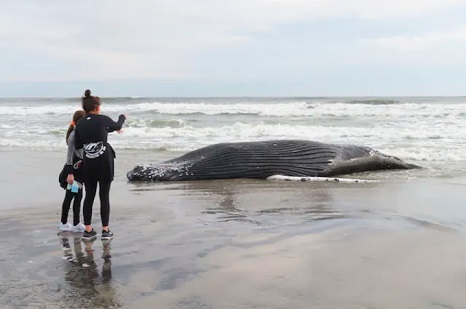
‘License To Kill’ Whales, Dolphins Handed to Offshore Wind Power Companies in Biden’s Green Energy Push
Greenpeace launched its “Save the Whales” campaign on April 27, 1975. But in the ensuing years, Greenpeace has gone full Orwell. Greenpeace is no longer interested in saving the whales. It may actually be aiding and abetting the Biden administration and the offshore wind industry in killing whales supposedly to “save the planet.” The deaths are coincident, however, with an increase in activity by the offshore wind industry as it surveys locations to erect its turbines. As it turns out, the federal agency has actually issued permits to the offshore wind industry to kill whales, dolphins and even seals. And not just one or two members of the species. >click to read< 09:11
Julie Packard – A Philanthropic Monopoly Financing A Hostile Takeover
Julie Packard, heir to a fortune was groomed for her ventures. Being raised in the affluent and growing beginnings of Silicon Valley, Palo Alto is the center of todays trillion dollar Big-Tech universe. The San Francisco bay area is well know for it’s liberal ideology. Since the days of 60’s Haight-Ashbury, San Francisco streets have seen it all.
About a tank full of gas in a Volkswagen bus away lies the retreats of Santa Cruz and Big Sur. Santa Cruz is home to University California Santa Cruz. UCSC started out as a haven for astronomy and space sciences. It has become a puppy mill for PhD’s of marine science, and has been named the #2 university in the nation for “making an impact” by these students. How did this come to be? Julie Packard of course; she got her Masters there.
Has the Precautionary Principle been blown away by wind power?
Has everyone conveniently forgotten the precautionary principle?
Seemingly all of the self-professed significant actors (both personal and organizational) with self-professed interest and expertise in how potential threats to the oceans and the critters in them should be handled has been synopsized for us rather conveniently-in the Antarctic Ocean Alliance Briefing #2: Applying the Precautionary Principle to Marine Reserves and Marine Protected Areas.*
Borrowing from said briefing, we have:
The foundation of the precautionary principle
The precautionary principle has deep roots finding expression in sayings such as ‘an ounce of prevention is worth a pound of cure’ or ‘better safe than sorry’. As the need to address environmental issues was increasingly recognized in the late 20th century, the precautionary principle became more widely used in national and international legislative contexts.
The precautionary principle was enshrined in International Law through Principle 15 of the Rio Declaration, 1992. The concept is now central to law making on a large range of issues, including climate change, toxic chemicals and genetically modified organisms (GMOs), forests, wildlife protection and oceans.
The use of the precautionary principle in ecosystem management is especially important in the case of the marine environment where scientific uncertainties abound. Repeated failures of management highlighted by the collapse of northern cod off Canada, the California sardine fishery, and herring, sandeels, blue whiting and capelin stocks in the North Sea have demonstrated the need for this approach in order to help address scientific uncertainty.
With the precautionary principle as a foundation many international agreements and bodies have sought to apply a precautionary approach specific to their particular challenges. In its essence the precautionary principle re-quires taking action in the form of protective conservation and management actions to reduce the risk of serious and/or irreversible harm from an activity before negative consequences become apparent. The establishment of MRs and MPAs is thus a precautionary act.
Precaution in regional fisheries management organizations (RFMOs):
Many international institutions and RFMOs have endorsed the use of the precautionary principle and precautionary approach in conserving marine ecosystems and protecting biodiversity.10 For example, the Convention on Biological Diversity (CBD)’s Conference of the Parties (COP) links the precautionary principle to the development of MPAs, noting that the COP “has a key role in supporting the work of the [UN] General Assembly with regard to marine protected areas beyond national jurisdiction, by focusing on provision of scientific and as appropriate, technical information and advice relating to marine biological diversity, the application of the ecosystem approach and the precautionary approach.”11 MRs and MPAs are thus increasingly recognized as an important application of the precautionary principle in the marine environment. Improving traditional fisheries management, data and modelling cannot always ensure the long-term sustainability of marine life.
Scientists note that “MPAs can serve to hedge against inevitable uncertainties, errors and biases in fisheries management. Marine Protected Areas (or as we have called them, simply, protected reserves) may well be the simplest and best approach to implementing the precautionary principle.”
The Antarctic Ocean Alliance is a coalition of more than 30 leading environmental organizations and high-profile individuals working together to achieve large-scale protection for key Antarctic ocean ecosystems.
Alliance members include the Pew Environment Group, Greenpeace, WWF, the Antarctic and Southern Ocean Coalition (ASOC), Whale and Dolphin Conservation (WDC), Humane Society International, Mission Blue (US), International Fund for Animal Welfare (IFAW), Oceans 5 (US), Deep Wave (Germany), The Last Ocean, Green-ovation Hub (China), the Korean Federation for Environmental Movement (KFEM), Forest & Bird (NZ), ECO (NZ) and associate partners the Natural Resources Defense Council (NRDC), Oceana, TerraMar Project, the In-ternational Polar Foundation (UK), Plant a Fish, the International Programme on the State of the Oceans (IPSO), the Ocean Project, Bloom Association (France), OceanCare (Switzerland), Eco-Sys Action, Ocean Planet (Aus-tralia) and Corail Vivant (New Caledonia). AOA Ambassadors include actors Leonardo DiCaprio, Edward Nor-ton, Oceanographer Dr. Sylvia Earle, entrepreneur Sir Richard Branson, Chinese entrepreneur and explorer Wang Jing and Korean actor Yoo Ji-Tae.(https://www.asoc.org/storage/documents/resources/aoa-briefing-2-applying-precautionary-approach.pdf, undated.)
All of the above enumerated anti-fishing activists and their organizations (and then some) have been using their so-called precautionary principle as a reason to oppose just about any fishing industry originated or accepted proposal or management proposal for any action which might actually result in helping fishermen and fishing because the radical environmental “rightness” of any outcome can’t be assured.
Yet, when it comes to protecting huge swaths of ocean-and huge numbers of the critters in them or dependent on them-from a seemingly endless list of actual or potential threats brought about by envisioned unprecedented offshore developments, these same self-styled activists/ocean saviors have all conveniently forgotten that anything vaguely similar to their revered precautionary principle has ever existed or should be applied to anything but fishing.
Clog our near shore and offshore waters with hulking (approaching 1,000 feet tall today, who knows what’s in store for tomorrow?) structures supporting huge rotors with tips moving through the air at velocities approaching 200 miles per hour? So what? Festoon our seabeds with electrical cables carrying huge amounts of electricity, the passage of which will generate electro-magnetic fields that will almost certainly have some effect on some of the species of critters that will be influenced at some level by those fields daily, monthly or annually? Who cares? Influence wave/current/tidal scouring and associated turbidity in undetermined-and very likely undeterminable-ways on the fish, marine mammals, birds, phyto- and zooplankton, and other sea life? What’s the difference?
And what of undersea server farms (see David Myers’ Microsoft hails success of its undersea data center experiment—and says it could have implications on dry land, too in the 9/15/2020 issue of Fortune magazine at https://fortune.com/2020/09/15/microsoft-project-natick-undersea-datacenter-scotland/), tidal generators (see Jake Dean’s The Scots Are Unlocking the Ocean’s Energy Potential posted to Slate’s website last month at https://slate.com/technology/2021/06/orbital-marine-power-scotland-ocean-energy.html), and telecom cables (see Adam Satariano’s People think that data is in the cloud, but it’s not. It’s in the ocean in the 03/10/2018 NY Times at https://www.nytimes.com/interactive/2019/03/10/technology/internet-cables-oceans.html)?
In addition (though it doesn’t generate electro-magnetic fields), we certainly shouldn’t ignore the biological and oceanographic impacts of seafloor mining (see Olive Heffernan’s Seabed mining is coming — bringing mineral riches and fears of epic extinctions in the 7/24/2019 issue of Nature at https://www.nature.com/articles/d41586-019-02242-y ).
All of these (and very probably other) activities come with potentially huge though for the most part unidentified downsides, but it’s very doubtful that the well-entrenched and well-funded activists and organizations that are so anxious to employ the precautionary principle to protect the Antarctic and other oceans from fishing will most probably be “out to lunch” when it comes to those considerations.
If (as?) it becomes apparent that that is the case, the major question is going to be why? With potential negative im-pacts that might easily prove to be worse than even poorly regulated fishing could ever be, energy-, telecom- or mining-developments, are the members of the fishing industry going to be capable of surviving with what’s just around the corner? Back in the 70s the fishing industry worked with other (primarily environmental?) interests to regain control of the fisheries resources of what was to become our Exclusive Economic Zone. Is that possible now?
Of course the answer is yes, but is it likely? It’s definitely not happening with wind power today. Evidently, according to the enviro-orgs that have never failed to invoke the precautionary principle when it comes to reducing restrictions on fishing, wind farm developers are on the side of the angels. The enviro orgs are apparently of the mind that windfarms and other proposed ocean uses-and misuses- are incapable of significantly harming the onshore, inshore or offshore en-vironment.
For an idea of where the anti-fishing activists might be going with this, take a look at A new home for fish: how offshore wind turbines create artificial reefs by Nicole DiPaolo in the National Wildlife Federation blog from 09/26/2019 (https://blog.nwf.org/2019/09/a-new-home-for-fish-how-offshore-wind-turbines-create-artificial-reefs/). This is the argument that got recreational fishing groups firmly behind the Gulf of Mexico oil industry before the Deepwater Horizon catastrophe. Since that catastrophe, perhaps not so much.
But with the antifishing activists the beat is going on. Enric Sala, former Pew (Trusts) Fellow in Marine Conservation who is presently National Geographic’s Explorer in Residence and a dozen or so of his cronies-including ex-NOAA head Jane Lubchenco, who should long be remembered for her controversial use of the dispersant Corexit in the Gulf oil fiasco) published Protecting the global ocean for biodiversity, food and climate (in the March 17 issue of Nature).
In essence Sala and his coauthors argue that one of the solutions for the imminent climate crisis is the coordinated establishment of fully protected (that is, protected from commercial fishing, of course!) marine reserves.
According to a review of the article in the March 17 issue of The Guardian (McVeigh, Karen/Bottom trawling releases as much carbon as air travel, landmark study finds), “the analysis shows that the world must protect a minimum of 30% of the ocean in order to provide multiple benefits. The scientists say their results lend credence to the ambition of protecting at least 30% of the ocean by 2030, which is part of the target adopted by a coalition of 50 countries this year to slow the destruction of the natural world.” According to the authors, bottom trawling releases roughly as much CO2 to the earth’s atmosphere each year as does global aviation. And (coincidently, because it’s right in line with the anti-fishing activists’ unrealistic and unnecessary “dream” of protecting 30% of the world’s oceans from fishermen) this could be reduced by establishing a corresponding network of marine protected (from fishing, not anything else) areas.
So evidently, in the view of a handful of marine scientists, most (we’ve been here before.See my February 2003 FishNet article The Pew Commission – a basis for national ocean policy? at https://www.fishingnj.org/netusa23.htm.) with direct or indirect connections to the Pew Charitable Trusts and all with the media influence that those connections afford them and who are willing to ignore actual and potential activities with massive negative impacts on our inshore and offshore ocean environments, this is one of the top priorities. They are still maintaining their campaign to continue persecuting commercial fishing and commercial fishermen needlessly.* And all of this in spite of their oft professed-though not so much lately-adherence to the precautionary principle and their blatant disregard of other stressors.
Their tunnel vision and short-sightedness seem staggering.
*In a response to Sala et al (above), Jan Geert Hiddink, S. van de Velde, R.A. McConnaughey, E. de Borger, F.G. O’Neill, J. Tiano, M.J. Kaiser, A. Sweetman and M. Sciberras wrote “Sala, et al. suggest that seafloor disturbance by industrial trawlers and dredgers results in 0.58 to 1.47 Pg of aqueous CO 2 emissions annually, owing to increased organic carbon (OC) remineralization in sediments after trawling. We agree that bottom trawling disrupts natural carbon flows in seabed ecosystems due to sediment mixing, resuspension and changes in the bio-logical community and that it is important to estimate the magnitude of this effect. We disagree however that their assessment represents a ‘best estimate’. Firstly, the assumption that OC in undisturbed sediment is inert and is remineralised only after disturbance by trawling is at odds with decades of geochemical research on natural processing of OC in marine sediments 2 . Secondly, the volume of sediment where carbon is mineralised after trawling is greatly overestimated. Thirdly, secondary effects, such as the removal of bioturbating benthic fauna and sedimentary nutrient release, which could lead to the preservation and production of OC in sediments, are ignored. Together these issues result in an upward bias in the estimated CO 2 emissions by one or more orders of magnitude.”

The Politics of Division
It is not that difficult to exploit divisions in the fishing industry. We are a complex, multi-faceted, diverse industry, targeting a wide range of different species. We operate inshore and offshore with a bewildering range of gears, fishing from different ports, in vessel sizes that range from under 8 metres to over 100 metres.,, Enter Greenpeace. There are and always will be in our industry the gullible or the cynical who can see advantage in associating with the playground bully. Not for them concerns for the livelihoods or lives of other fishermen. They are prepared to line up with a criminal body which endangers the lives of other fishermen by dumping boulders on fishing grounds. That, for them, is an OK thing to do. >click to read< 10:16





































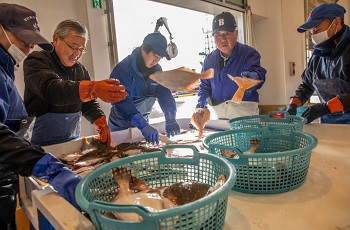

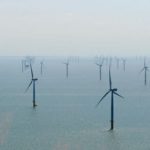
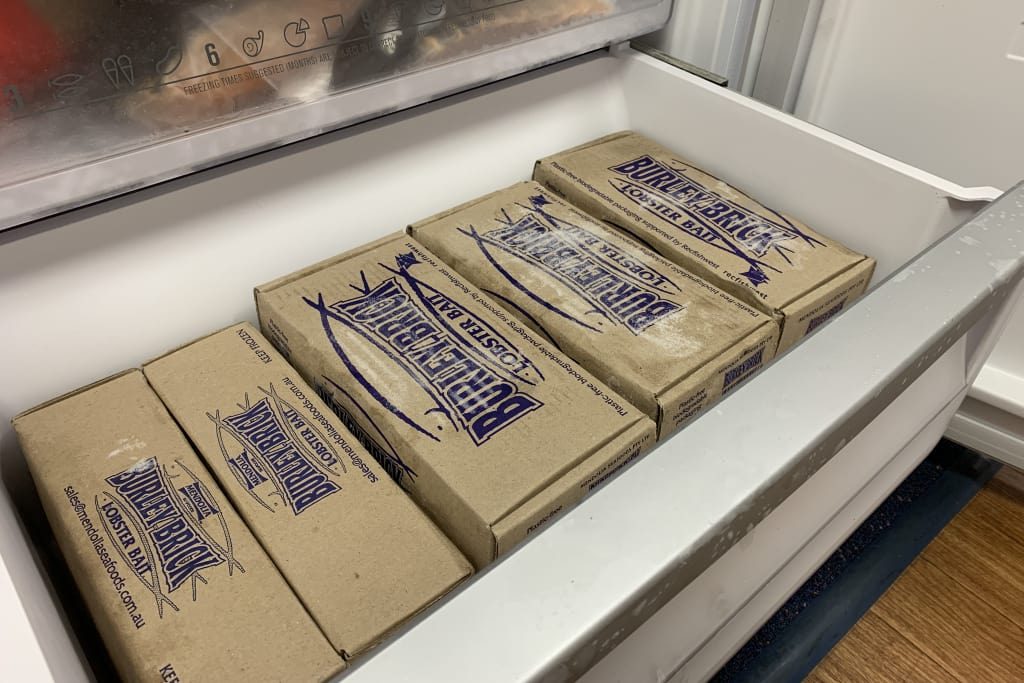
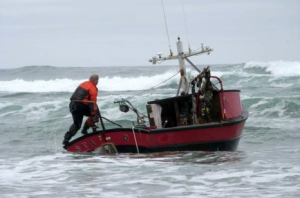

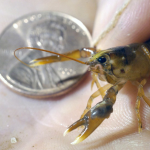
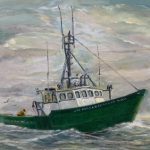





Greenpeace whines about John Sackton’s seafoodnews.com pollock redlisting comment while kissing undercurrents fanny
After numerous suggestions to Seafood.com’s John Sackton that his stories about Greenpeace might be more accurate if he took the time to check in with us, we finally concluded that if his biases were obvious to us, they were probably obvious to others as well. Read the rest here 08:31
Share this post